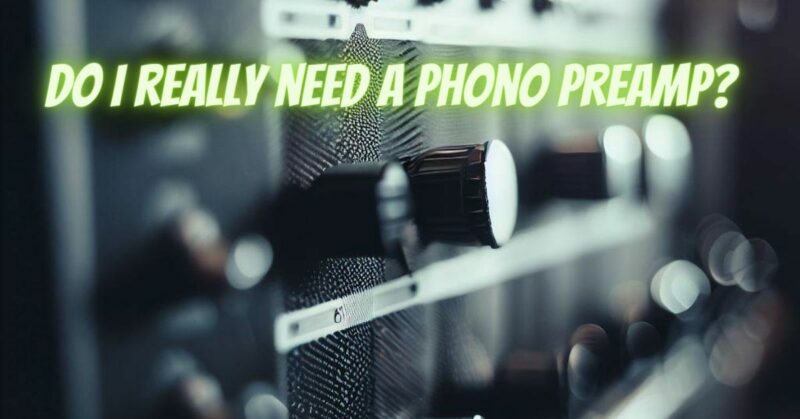Vinyl records have made a remarkable resurgence in recent years, appealing to audiophiles and music enthusiasts for their unique and analog sound. When setting up a turntable, one common question that often arises is, “Do I really need a phono preamp?” In this article, we’ll explore the role of a phono preamp, its necessity in vinyl playback, and whether it’s an essential component for your audio setup.
The Role of a Phono Preamp
A phono preamp, also known as a phono stage or preamplifier, is a specialized component in the audio chain that serves several crucial functions:
- Signal Amplification: Vinyl records store audio information in the form of grooves, which are physically etched with varying amplitudes and frequencies. These signals are extremely weak and require amplification to reach a level suitable for further amplification by an amplifier or receiver. A phono preamp boosts this weak signal.
- Equalization (RIAA Curve): During the recording of vinyl records, a specific equalization curve known as the RIAA curve is applied to optimize the recording and reduce noise. The phono preamp reverses this curve, restoring the audio to its original form.
- Impedance Matching: Phono cartridges have unique impedance characteristics. Phono preamps are designed to match the impedance of the cartridge, ensuring optimal performance and accurate reproduction of sound.
- Noise Reduction: Phono preamps often include features for minimizing unwanted noise, such as hiss and hum, which can occur during vinyl playback.
The Necessity of a Phono Preamp
Whether you need a phono preamp depends on several factors:
- Turntable and Cartridge: Some turntables come equipped with a built-in phono preamp, also referred to as a “phono stage” or “phono input.” If your turntable has this feature, you may not need an external phono preamp.
- Amplifier or Receiver: Check your amplifier or receiver. Some modern audio equipment includes a built-in phono preamp. If your amplifier has a dedicated “phono” input, it typically has an integrated phono preamp.
- Cartridge Type: The type of cartridge you use can influence whether you need an external phono preamp. Moving magnet (MM) cartridges typically output a higher signal level and may not require an external preamp as compared to moving coil (MC) cartridges, which have lower output levels and often benefit from external phono preamps.
Benefits of Using a Phono Preamp
Even if your turntable, amplifier, or receiver has a built-in phono preamp, there are several benefits to using an external phono preamp:
- Sound Quality: High-quality external phono preamps can provide superior sound quality, offering improved clarity, detail, and a more faithful reproduction of the original recording.
- Customization: Using an external phono preamp allows you to customize your audio setup to match your preferences, whether you seek warmth, clarity, or specific sonic characteristics.
- Equipment Preservation: An external phono preamp can help preserve the life of your turntable and records. It minimizes wear on the stylus and records by ensuring accurate tracking and playback.
- Compatibility: In some cases, an external phono preamp may be necessary if you want to connect your turntable to audio equipment that lacks a built-in phono stage, such as certain amplifiers or powered speakers.
While not always an absolute necessity, a phono preamp plays a significant role in vinyl playback by amplifying the weak signal from the cartridge, correcting the RIAA curve, and ensuring proper impedance matching. Whether you need an external phono preamp depends on your specific audio equipment and cartridge type, but there are undeniable benefits to using one, including improved sound quality, customization options, and equipment preservation. Ultimately, the decision to use a phono preamp should align with your audio preferences and the capabilities of your audio system.

